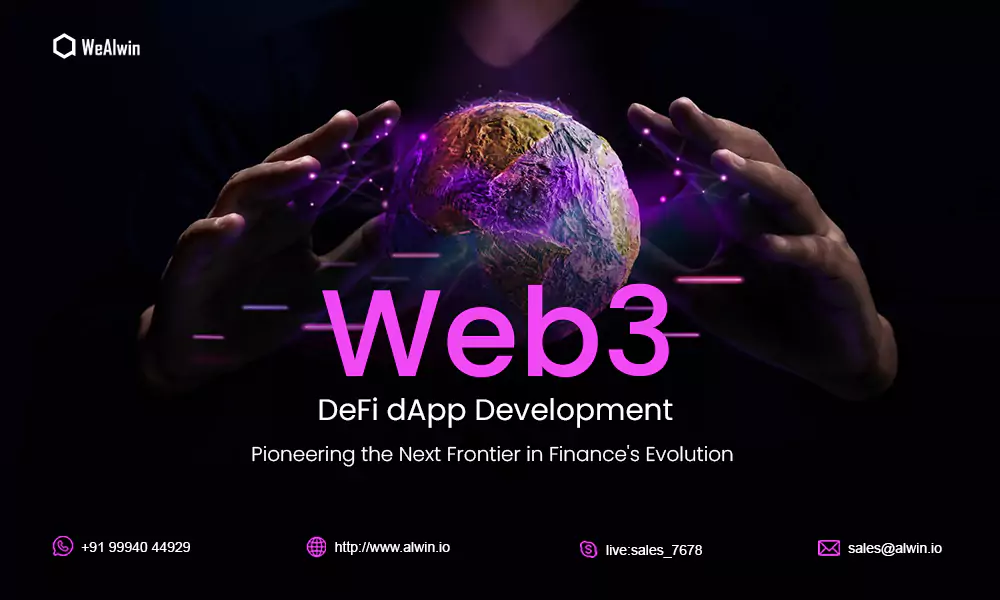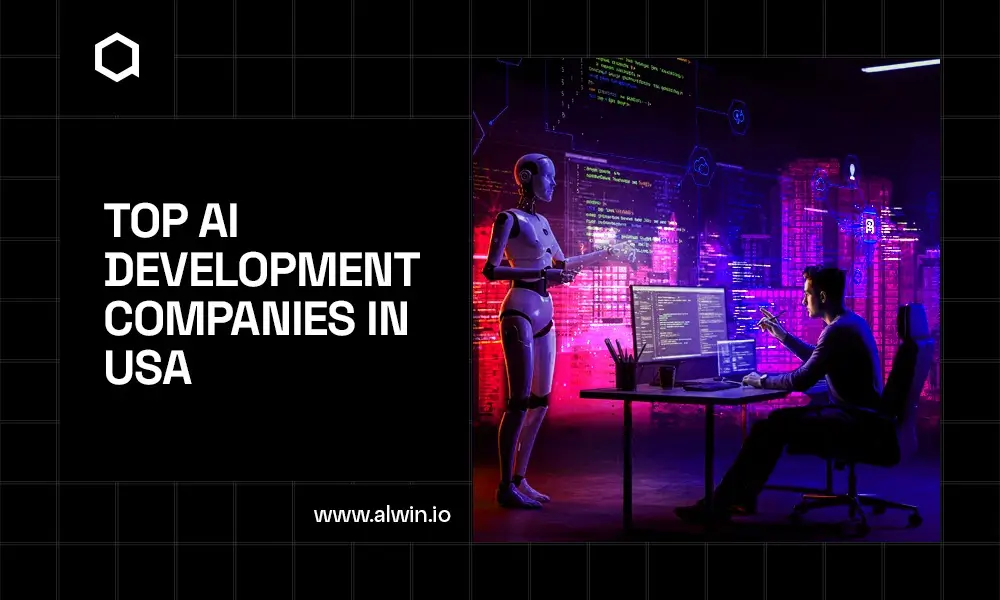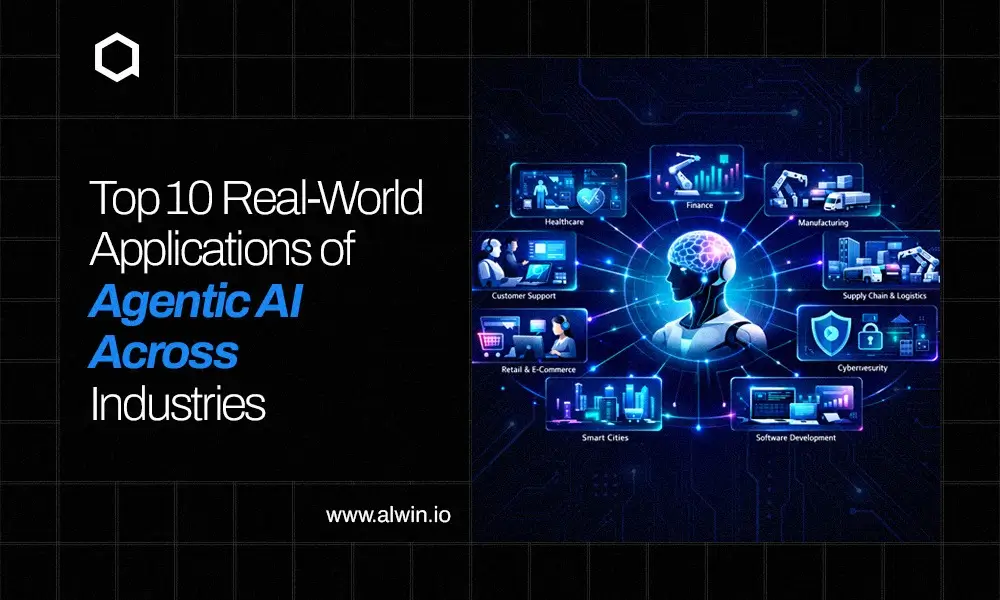The internet has come a long way since its inception, brace yourselves for an exciting journey into the future, we find ourselves on the cusp of a new era in finance.
Web3, with its decentralized nature and innovative technologies, is revolutionizing the way we interact with the digital world. In particular, the emergence of Decentralized Finance (DeFi) and decentralized applications (dApps) is reshaping the financial landscape.
As an entrepreneur or startup, understanding the potential of Web3 DeFi dApp development is essential for staying ahead in this rapidly evolving industry.
So, What exactly is dApp?
A dApp is an application that operates on a decentralized network, typically utilizing blockchain technology. It leverages blockchain networks, smart contracts, and direct peer-to-peer interactions to provide enhanced security, transparency, and user control compared to traditional centralized applications.
Benefits of using dApps in the finance industry
Improved accessibility: dApps enable global access to financial services, empowering individuals who lack access to traditional banking systems.
Enhanced security: The decentralized nature of dApps reduces the risk of single points of failure and unauthorized tampering.
Greater financial control: Users have complete ownership and control over their funds, eliminating the need for intermediaries.
Web3 Infrastructure for DeFi dApps
Blockchain is the underlying technology that powers Web3 and enables secure and transparent transactions. It consists of a distributed ledger that records all transactions across a network of computers, ensuring consensus and immutability.
Smart contracts are self-executing contracts with predefined rules coded into the blockchain. In DeFi, smart contracts automate financial agreements, enabling decentralized lending, borrowing, and other financial activities.
Ethereum, Binance Smart Chain, and Solana are popular blockchain platforms for DeFi dApps, each with its own advantages and considerations. Factors such as scalability, security, and developer ecosystem should be evaluated when selecting a platform.

Key Features and Functionality of DeFi dApps
Decentralized exchanges (DEXs) and their impact on traditional finance
DEXs facilitate peer-to-peer trading without the need for intermediaries. They enable users to trade cryptocurrencies directly from their wallets, improving liquidity and reducing trading fees.
Yield farming and liquidity pools in DeFi
Yield farming involves providing liquidity to DeFi protocols in exchange for rewards. Liquidity pools aggregate funds from multiple users, enabling efficient trading and earning potential through interest or fees.
Automated market makers (AMMs) and their role in DeFi dApps
AMMs are protocols that use mathematical algorithms to determine token prices and facilitate decentralized trading. They enable seamless token swaps and liquidity provision, improving market efficiency.
Governance and decentralized autonomous organizations (DAOs) in DeFi
Governance mechanisms allow token holders to participate in decision-making processes regarding protocol upgrades and parameter adjustments. DAOs are organizations governed by smart contracts, allowing for decentralized decision-making and community involvement.
Security Challenges in DeFi dApp Development
Security is paramount in DeFi dApp development to protect user funds and prevent vulnerabilities. The decentralized nature of DeFi brings unique security challenges that need to be addressed.
Common security vulnerabilities in DeFi dApps
Smart contract bugs and vulnerabilities can lead to financial losses. Attack vectors such as flash loans, oracle manipulation, and front-running pose risks that need to be mitigated.
Best practices for securing DeFi dApps
To ensure robust security in smart contract development, it is imperative to prioritize thorough audits and testing conducted by experienced security experts. By implementing standardized security measures, such as multi-signature wallets and time locks, we can fortify the protection of smart contracts.
Furthermore, encouraging bug bounty programs and community-driven security initiatives helps create a collaborative environment that promotes the identification and resolution of potential vulnerabilities.
Together, these practices bolster the security posture of smart contract development and contribute to the overall resilience of decentralized applications.
Tools and Technologies for DeFi dApp Development
Programming languages for smart contracts
Solidity is the most widely used programming language for Ethereum smart contracts.
Other languages like Vyper, Rust, and JavaScript are also gaining popularity for smart contract development.
Development frameworks and libraries for DeFi dApps
Frameworks like Truffle and Hardhat provide development environments and tooling for efficient dApp development. And libraries such as OpenZeppelin offer pre-audited and secure smart contract components for faster and more reliable development.
Testing and debugging tools for DeFi dApp development
Testing frameworks like Truffle and tools like Ganache enable developers to simulate and test smart contract functionality. Debugging tools like Remix and Hardhat facilitate the identification and resolution of smart contract issues.
Wallet Integration and User Experience Considerations
Integrating wallet providers like MetaMask or WalletConnect enables seamless user interactions with DeFi dApps. Designing intuitive user interfaces and optimizing transaction costs are essential for a smooth user experience.
Funding and Monetization of DeFi dApps
Fundraising options for DeFi dApp projects
Initial Coin Offerings (ICOs), Initial DEX Offerings (IDOs), and decentralized fundraising platforms offer opportunities for funding DeFi projects. Venture capital funding and grants from blockchain foundations can also support DeFi dApp development.
Revenue models for DeFi dApps
Revenue streams in DeFi can include transaction fees, protocol governance tokens, and value-added services. NFT marketplaces, lending platforms, and decentralized insurance are examples of DeFi dApps generating revenue.
Leveraging tokenomics in DeFi dApp monetization
Tokenomics refers to the design and implementation of tokens within a blockchain ecosystem. Carefully designed tokenomics can incentivize user participation, create value, and drive network effects.

Interoperability and Integration with Traditional Finance
Bridging the gap between DeFi and traditional finance
Interoperability solutions like blockchain bridges and cross-chain communication protocols enable the seamless transfer of assets between DeFi and traditional financial systems. Integration with traditional financial infrastructure, such as payment gateways and banking services, can enhance the usability and adoption of DeFi dApps.
The role of oracles in connecting blockchain and external data sources
Oracles provide external data to smart contracts, allowing them to interact with real-world information. They play a crucial role in enabling DeFi dApps to access off-chain data, such as price feeds or weather conditions.
Challenges and opportunities for DeFi integration
Regulatory compliance and legal considerations need to be addressed when integrating DeFi with traditional finance. DeFi offers opportunities for financial inclusion, reduced costs, and increased efficiency in traditional financial services.
Future Trends and Potential Impact of DeFi dApps
Innovations and advancements in DeFi technology
Layer 2 scaling solutions, cross-chain interoperability, and advancements in privacy and security are driving the evolution of DeFi. New financial primitives and novel applications are constantly emerging, expanding the possibilities of DeFi.
Potential disruptions to traditional financial systems
DeFi has the potential to challenge traditional financial institutions by offering decentralized and permissionless alternatives. Reduced reliance on intermediaries, improved accessibility, and enhanced financial control could reshape the financial industry.
The Role of DeFi in promoting financial inclusion
DeFi can provide financial services to the unbanked and underbanked populations globally. By eliminating geographical barriers and reducing costs, DeFi empowers individuals with greater financial opportunities.
Real-world Successful DeFi dApp Projects
Aave: DeFi Platform Showing Liquidity Protocol
Aave is a decentralized finance platform that enables users to lend and borrow a wide range of cryptocurrencies through smart contracts. By utilizing the Ethereum blockchain, Aave eliminates the need for traditional financial institutions and intermediaries, allowing individuals to have more control over their funds.
With 26 different cryptocurrencies available for depositing and earning interest, and 25 available for borrowing, Aave aims to make essential financial services more accessible. The platform uses algorithms to determine interest rates based on utilization rates, ensuring competitive rates for users.
Aave offers two DeFi tokens: AAVE, the native governance token, allowing holders to vote on improvement proposals, and ATokens, which are interest-bearing tokens issued to lenders. Aave also supports flash loans, collateral-free loans that need to be paid back within the same transaction. Additionally, Aave provides a staking feature for users to act as insurance against market risks. With the launch of the Aave Protocol in 2020, users now have the opportunity to lend and borrow real funds.
Fantom: Digital Assets, dApps, & Smart Contracts
Fantom is an open-source smart contracts platform that offers fast and cost-effective transaction processing. It aims to provide a balance of security, stability, and decentralization, making it an ideal environment for dApp development. With its unique consensus mechanism called Lachesis
Fantom achieves nearly instant transactions and can handle thousands of transactions per second at a fraction of a cent. It is widely used in decentralized finance (De-Fi) and on-chain governance activities, allowing token holders to vote on proposals and make decisions.
Additionally, Fantom supports staking rewards, network fees, and compensating validators. Its integrated DeFi stack enables users to mint fUSB, a stablecoin pegged to the U.S. dollar, for trading, borrowing, and lending against various tokens and synthetic assets.
As of November 17, 2021, Fantom is trading at USD 2.03 with a significant 24-hour trading volume on exchanges.
PancakeSwap: Well-Known Decentralized Platform
PancakeSwap, an emerging decentralized finance (DeFi) protocol, has quickly gained traction in the past year. Built on the Binance Smart Chain, it operates as an automated crypto market maker and trading liquidity provider, similar to Aave.
With over five billion staked on its decentralized exchange (DEX), PancakeSwap stands out as a cost-effective option compared to peers like Uniswap.
Key features that make PancakeSwap attractive include being built on the Binance Chain BEP-2, audited by CertiK for enhanced security, and enabling token trading without intermediaries while allowing users to maintain custody of their tokens.
By utilizing the automated money maker (AMM) model and liquidity pools, users can earn rewards and swap for desired coins.
Additionally, PancakeSwap offers unique features like game-like experiences, NFTs, and IFO sales, making it an exciting platform for DeFi enthusiasts. To use PancakeSwap, users need a compatible crypto wallet such as Math Wallet, Trust Wallet, Binance Chain Wallet, or even MetaMask configured to work with the Binance Smart Chain.
As Ethereum faces challenges with high fees and congestion, PancakeSwap is well-positioned to strengthen its position in the market alongside Uniswap and Sushiswap, Ethereum's major DEXs.
Conclusion
we find ourselves at the threshold of an extraordinary era—the era of Web3. The convergence of decentralized applications (dApps) and decentralized finance (DeFi) has opened up a world of possibilities for entrepreneurs and startups alike. By understanding the fundamentals of dApps and harnessing the power of Web3 infrastructure, we have the ability to drive unparalleled financial innovation.
However, as we embark on this exciting journey, we must not overlook the crucial aspect of security. By addressing security challenges through comprehensive audits, meticulous testing, and the implementation of standardized security measures, we can ensure the resilience and trustworthiness of our Web3 DeFi dApps.
That's where Wealwin Technologies, comes in. With our expertise in Web3 development services, we are poised to support you every step of the way. Our team of professionals understands the intricacies of the decentralized landscape, and we are committed to helping you shape the future of finance.
So, let's seize this incredible opportunity together.
Explore the vast potential of Web3 DeFi dApp development with Wealwin Technologies.
Together, we can make a lasting impact on the world of finance and lead the way in this new era. The future awaits, and we are ready to embark on this transformative journey with you.



